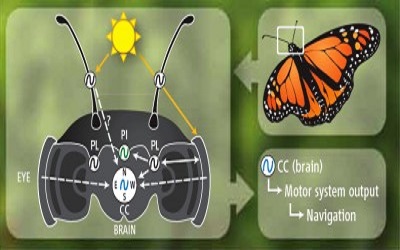PTE考生目前最大的问题之一就是练习题缺乏。除了有限的基本官方书(PLUS,Testbuilder, OG)之外就没有题了。很多英语基础不是很扎实的同学很难找到练习材料。悉尼文波雅思PTE培训学校专门为澳洲,尤其是悉尼、墨尔本的PTE考生准备了适合PTE听力阅读练习的科学60秒。各位PTE同学可以练习PTE听力中的summarise spoken text和PTE口语中的retell lecture,PTE听力口语-科学60秒-Frosty Moss练习记笔记技巧和复述。废话少说,下面开始:
60秒科学:Antennae Key to Butterfly Navigation
Antennae Key to Butterfly Navigation
A study in the journal Science shows that monarch butterflies’ sun–related directional sensing is governed by antennae, not the brain. Cynthia Graber reports
Every year, millions of monarch butterflies fly thousands of miles to alight in one specific forest in Mexico. How do they know what direction to flutter? Scientists had thought that an insect GPS system in their brains steered them in the right direction.
Now, a new study published in the journal Science overturns that idea. Because sun–related directional sensing actually resides in the butterfly’s antennae, say scientists at the University of Massachusetts Medical School.
The researchers remembered a half–century old study that noted that if butterflies lost their antennae mid–flight, they became disoriented. So they put butterflies in a flight simulator and tried to convince them to fly south. Those with their antennae intact had no problem orienting and flying south. But those without their antennae just couldn’t do it. Next they painted some butterflies’ antennae black, blocking light sensing. Those insects couldn’t orient themselves. But when researchers covered antennae in clear paint, the butterflies could once again fly in the correct direction.
Butterfly antennae were already known to sense odor, wind, even sound. Now it seems that they’re also vital for getting lonely Lepidopterans back to Mexico to mingle—and make the next generation of monarchs.
—Cynthia Graber





